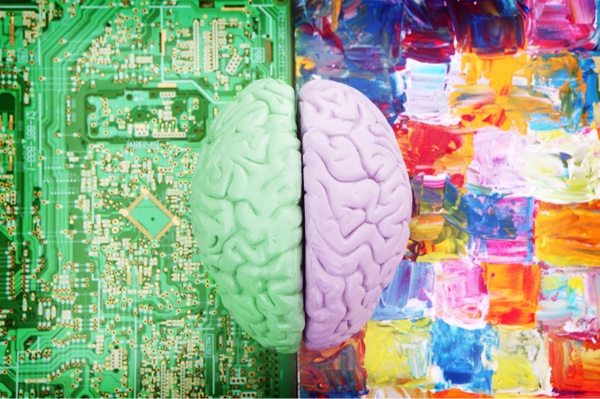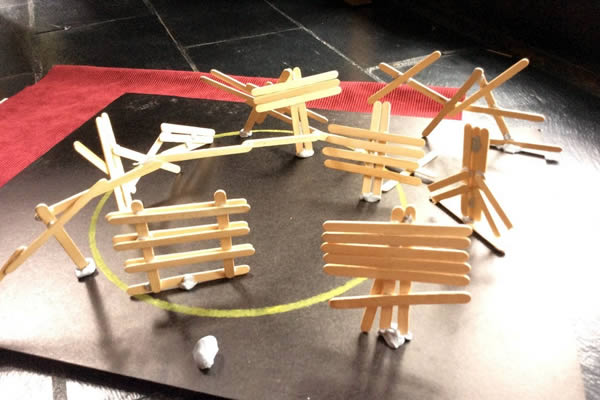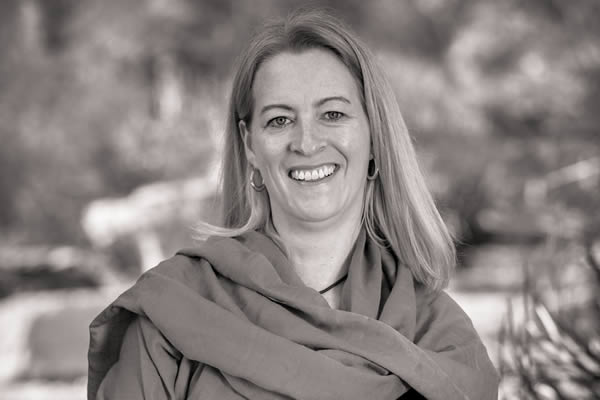‘I have no doubt that most people live – whether physically, intellectually or morally – in a very restricted circle of their potential being. They make use of a very small portion of their possible consciousness, much like a man (person) who out of his whole bodily organism, should get into a habit of using and moving only his middle finger.’ – William James, the ‘father of American psychology’
I spent the first 36-plus years of my life firmly stuck in my head. Like most people, I was under the impression that that was where we do our thinking and feeling. I thought that the brain – the body’s computer – was responsible for all that stuff, and that it was pretty efficient at it as well. And to be honest, my head had served me pretty well to that point.
It took a major life experience to crack that paradigm wide open and cause me to look at the whole idea of the mind quite differently. In doing so I learnt about some very different ways of looking at consciousness. I started to explore different perspectives of consciousness and new ways of accessing deeper levels of it.
It has been recognised for over a hundred years that we typically use only a small part of our minds. Freud’s model of the human mind suggested that only about 10% of our mind’s work is conscious and readily available to us, with 50 to 60% subconscious and the remainder a level deeper in the unconscious.
It has also long been recognised that many of us tend to think more with the left ‘logical’ hemisphere of our brain and very little with the right ‘creative’ side.
Over time other models of the mind have evolved, most of which separate the concept of the ‘mind’ from the physical organ that is the ‘brain’. One of those which is gaining increasing focus recognises that the mind extends well beyond the brain and into the rest of the body. In fact there are three centres of the mind: the head, the heart and the gut.
If we stop to think about it, this is intuitively true. We can all identify times when emotions seemed to have literally ‘pulled at our heart strings’ and brought us to tears, and even gently placed our hand over our heart. Or in another situation a “gut feeling’ may arise, we may even pause momentarily…then to rationalise the feeling away. It’s interesting how this ‘gut feeling’ can then cause discomfort in our gut or even put us off eating altogether. What if we could tap into all three centres of the mind: head, heart and gut?
Grant Soosalu and Marvin Oka of mBraining go as far as to call each of these centres separate ‘brains’, (just to confuse the mind/brain thing) the ‘heart brain’ being responsible for emoting, values and relations, the ‘gut brain’ for our core identity, self-preservation and mobilisation, and the ‘head brain’ for cognitive perception, thinking and making meaning.
Cassandra Goodman notes in a recent article on Linkedin that research in the field of neuroscience is starting to take this thinking beyond the anecdotal, identifying real neural connections between the head and the heart and the head and the gut.
A lot of this is new science and still controversial, but the evidence is mounting.
Implications for leadership
The pace and complexity and ambiguity of today’s working environment is making life challenging for many leaders. Whether you find that yourself or you see it amongst the people you work with, I’m sure you know what I’m talking about.
Leaders – whether in business, the not-for-profit and community sectors or in politics – are increasingly expected to look beyond one-dimensional outcomes in which ‘the end justifies the means’. Both employees and customers want more. Employees are looking for greater purpose in their work. They expect that their workplace will improve rather than hinder their wellbeing. Customers want to know not only that a product or service is going to meet their needs but that it was created in an ethical, fair and sustainable way.
And we know these challenges are only going to increase.
Given all of this, it simply makes sense that leaders – and by extension all of us – need to find ways to access a greater proportion of our mind. Today’s well-rounded leader needs to be able to access the whole of their brain (left and right sides) – their head centre – as well as their heart and gut centres.
The question is, how can that be done?
How to access more of the mind
The trick here is to learn new techniques for accessing – to return to the Freud model – the 90% of the mind that we don’t normally tap into. Or to use the three centres model, to get out of our heads and tap into our heart and gut centres.
My discovery was that there are all sorts of ways this can be done. There are all sorts of ways we can begin to access the an inner dimension of ourselves and bring to the surface more of our subconscious and unconscious ‘treasures’.
I’ll share some of what I found in the next post.
This post explores how leaders must master the dance between ‘thinking and doing’ and ‘feeling and being’ to increase personal wellbeing and their capacity to solve the complex problems and challenges of our times.
What’s happening in your world right now? What are some of the things you have been busy ‘doing’ over the past 48 hours? The daily tasks and activities that fill up your life?
At what times over the past 48 hours have you found yourself connected with something more enduring: time for meditation, reflection, a walk on the beach, a cuddle with a loved one? Times when you were 100 per cent present in the moment, fully connected to ‘feeling and being’ rather than just ‘thinking and doing’?
When we become exclusively focussed on ‘thinking and doing’, our lives can start to feel meaningless and empty and we start to wonder why we work so hard. We may secretly ask whether it’s worth it. What’s the point? What’s the meaning of life? If we don’t listen, life keeps throwing stuff at us until we do.
I spent first 36 years of my life thinking and doing, focussed on external measures of ‘success’. I didn’t listen, and I crashed. I crashed multiple times in fact. I suffered post-natal depression. I had a moon boot on a broken ankle for nine weeks (that turned out not to be broken ironically). And more … until I listened to myself. After I listened I started to open to ‘feeling and being’.
The last decade has been a deep immersion into feeling and being. I’ve been learning the practices that connect into the wisdom of my body and my intuitive self. My internal navigation system now leads the way in life and business.
It’s not that ‘feeling and being’ is better than ‘thinking and ‘doing’. They are a powerful partnership. It’s just that in the world we live in and the workplaces that we show up to everyday, ‘thinking and doing’ is valued whereas ‘feeling and being’ is undervalued. That is the problem.
It’s also the opportunity.
Human organisations value both ‘thinking and doing’ and ‘feeling and being’. Both are interwoven through the culture of the organisation, through its very fabric of decision making, leadership mindset and practices, investment allocation, behaviours and customer experience. Many start-ups do this well. The organisations that will thrive in the future will be those that can evolve to welcome feeling and being to the table as the equal, if not wiser, partner of thinking and doing.
Robert Johnson, a student of Carl Jung and well established in his own right, refers to the power of the symbol of the Christian cross in his book Balancing Heaven and Earth. He writes, “I have come to understand the cross as a symbol of two opposing forces that must be balanced, with the balancing point always in the middle of where the two strong opposing forces intersect.” (page 48)
While I am not religious myself, the visual idea of achieving optimal performance at the intersection of the cross where ‘thinking and doing’ (the horizontal) meets with ‘feeling and being’ (the vertical) is a powerful daily reminder.
In workshops I have had participants create their own version of the cross (using Blu Tack and icy pole sticks) based on how they feel they are putting their energy and focus into these two opposing forces in their lives. The models people create provide a powerful visual of the impact that being out of balance has on their lives and invites curiosity and change. When you then put a collection of these individual models together into a ‘community’, you quickly get a sense of the discomfort and suffering that is being experienced in families, teams, organisations and communities. I believe the core of this discomfort comes back to this challenge of balancing ‘feeling and being’ and ‘thinking and doing’.
What does this mean for leadership?
The complex problems and challenges of our time will not be solved by thinking and doing alone. As leaders, optimal performance and personal wellbeing is available to us when we learn to master the dance between ‘thinking and doing’ and ‘feeling and being’.
When we make a commitment to practicing and mastering this dance at an individual level, then we transform ourselves, and in turn also transform our families and the teams, community, and organisations in which we serve.
Taking time to nourish yourself, to create space, welcome stillness and silence, build your toolkit of skills and practices that promote feeling and being and committing to a lifelong journey of self-discovery to deepen connection with yourself is non-negotiable if you want to be the best possible version of you.
How do you choose to be as a leader for this time?
Inspired by Meg Wheatley, this post outlines the personal beliefs that motivate my action these days and invites leaders to consider doing this same.
It is now well understood that our (internal) values and beliefs drive our (external) actions and behaviours. Two well-known models, amongst many others, that demonstrate this are the iceberg culture model and Ken Wilbur’s four quadrant model.
I was recently surprised and delighted reading Margaret Wheatley’s book Turning to One Another in which, early on, she casually and clearly articulates the beliefs that motivate her action these days. It felt refreshing and transparent. It got me wondering how often, if ever, we as leaders take time to stop and capture the beliefs that drive our actions and behaviours? To actually write them down?
When did you last do this?
Given my passion for personal values, I have mapped my personal values over many years. I have observed the growth and shifts and the resulting changes in my behaviour and decisions (which I will leave to another post). But I have never stopped and written my beliefs down. Now is obviously the time!
So taking the lead from Margaret’s fresh approach, I wrote a heading on the page:
What are the beliefs that motivate my actions these days?
In the context of my vision to inspire leaders to do the personal development work they need to become the best possible versions of themselves, and in doing so to build human organisations, here is some of what followed.
- We are out of balance and that is the source of so much illness, disconnection, suffering, poor decision making and performing – within ourselves, our teams, our organisations, families and communities. Starting at a physiological level ( you know – the normal biological functions of our bodies) our automatic nervous system is out of balance with an overactive sympathetic nervous system (tension) and under active parasympathetic nervous system (our relaxation response). You can read more about that here. We spend too much time thinking and doing, responding to the demands of the external world. We are disconnected from our inner wisdom and knowing, feeling and sensation and the people that matter to us. (Perhaps there’s a thesis in here somewhere?)
- Optimal performance and inner peace and happiness are more readily available to us when we restore balance. You can read more about 1 and 2 in this blog post: Mastering thinking and doing AND feeling and being
- We have to learn new ways to access our inner potential and wisdom to respond to the wicked challenges of the time we are in. It’s less about skills and knowledge and traditional leadership development and its and more about building our capacity as human beings. One example of this is that many of us are left brain dominant (the centre that deals with language, logic, ration and reason) and underdeveloped in our right brains (the creative, intuitive side). There is so much untapped potential available to us via our right brain.Two ways I know how to do this are through Art Therapy and Yoga Nidra Meditation. You might also like to read here about the wonderful potential of the mind and why they are important for leaders.
- Developing people is the solution to the problems that confront us. (I share this one with Margaret Wheatley.) It’s not about training. It’s about development. A lifelong commitment to learning and growing is needed, accelerating the normal human developmental journey that is available to us all. ‘Get Connected- Its where change happens Part 3 – Connect to ‘Our Reality, Connect to Our Learning’.
- Wellbeing is a strategic business issue that is not separate from cultural transformation. Wellbeing is so much more than a tactical intervention with a fruit bowl in the kitchen and yoga classes for employees (although these are important in their own right). Achieving wellbeing and transforming culture are one and the same, leading to a healthy, thriving, ‘well’ organisational culture and human organisation. My point is that there is no need to pursue these two things separately. Rather, wellbeing and cultural transformation should be part of the same strategy.
- We are all craving intimacy. I am not referring to sexual intimacy. I am referring to the connection that we need as human beings. Relationships are all we have. It’s essential that we create the space and build the capacity and capability to form real connections with each other in the workplace, in our families and in our communities. This will mean putting down our technology and ‘moving towards’ one another with compassion and deep care. This is what is needed right now. ‘Get Connected- Its where change happens Part 2 – Connect to ‘US’.)
- Fully human organisations are the ones that will thrive in this next decade and beyond. You can read more about my vision for fully human organisation here. I would love to hear your thoughts.
- We have to consciously create space if we want to create change. Change simply does not happen unless we carve out ‘space’ in our lives and guard that space as though our lives depend on it. Space to reflect, to think; space for feeling and being. Space in each day, each week, each month, each year – for ourselves and our teams.
Not an exhaustive list but a solid start.
How about you? What are the top beliefs that are motivating your actions?
These blog posts explore the lens of building ‘connection’ as a model to guide cultural transformation for teams and organisations.
We live in connected times, in which technology allows us to be connected at all times – even in the air now – with virtually everyone in our working and private lives. At the same time, ironically, we are more disconnected than ever before – from ourselves and from each other. We see this in individuals, teams, organisations, families and communities, in which feelings of isolation, mental health issues, relationship breakdowns, stress related illness and dysfunctional team cultures are more common than they’ve ever been. Sound familiar?
Connection – real, human connection – is at the heart of the human organisation. Connection characterises great leadership and therefore is at the heart of any thriving workplace culture.
In much of my work in recent years, I have used the model shown here – adapted from the Barrett Values Centre ‘Get Connected’ model – as a road map to simplify some of the complexity and multi-faceted considerations around connections that exist when navigating cultural change.
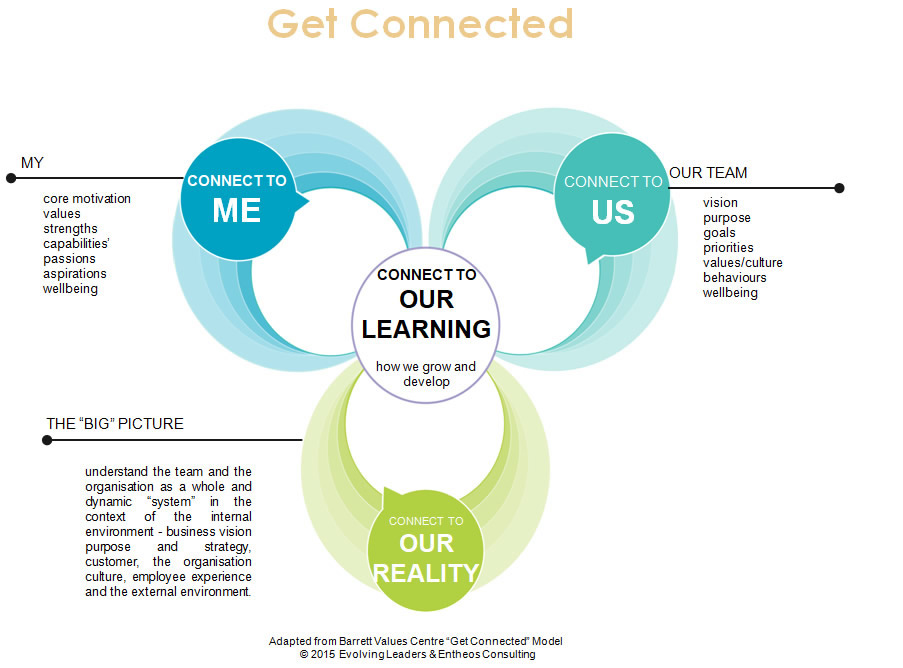
The model guides the discovery and learning journey toward a healthy team culture and a thriving organisation through focus on four cornerstones: ‘Connect to Me’, “Connect to Us’, ‘Connect to our Reality’ and ‘Connect to Our Learning’.
In Part 1 of this post I will focus on the first of the four cornerstones “Connect to Me”.
Connect to Me
This is all about personal leadership. Who am I? What matters to me? What is my core motivation? My passions? My strengths? My preferences? It’s about taking personal responsibility.
What does this mean in the context of living a purposeful life?
What does this mean in the context of my role, the team and organisational culture?
It’s about developing self-awareness, capacity for reflection and developing the confidence to share your whole self at work. It’s about feeling psychologically safe so that you can challenge norms and exhibit new ways of being. It’s about learning to be present with others and to listen without judgement or need to comment. It’s about sharing from a place of realness and vulnerability and having others witness you on your personal discovery journey.
When you undertake this personal development with your manager and team members, you build confidence to bring ‘more of who you really are’ to work and thereby the ability to share your unique gifts in service of the team and organisation. You understand each other at a whole new level and that connection brings healthier ways of working straight back to the workplace.
For a leader, the ability and willingness to bring your real self, warts and all, to your work – to be ‘comfortable in your own skin’ – is powerfully reassuring to others. It gives others permission to do the same, each building their own individual ‘connection to me’. This is great leadership in action.
“When we begin listening to each other and when we talk about the things that matter to us, the world begins to change” (Margaret Wheatley – Turning to one another, page 13)
The movement toward a healthy team culture and a human organisation is built on members of that team taking personal responsibility for expanding their self- awareness and capacity in the context of the role, team and organisation. The Connect to Me model provides a roadmap for this personal learning.
In Part 2 and 3 of this blog post series I explore the other three cornerstones of connection: Connect to Us, Connect to our Reality and Connect to our Learning.
These posts explore the lens of building ‘connection’ as a model to guide cultural transformation for teams and organisations.
In Part 1 of this series, I explored the first cornerstone of connection, ‘Connect to Me’. In this post we will look at the second cornerstone, ‘Connect to Us’.
Where ‘Connect to Me’ was all about personal leadership and having the confidence to bring ‘more of who you really are to work’, ‘Connect to Us’ is about the group. It follows that the more each of us is willing to reveal our ‘warts and all’ self at work, (and there is the leadership and team culture that provides the best conditions for this to happen), then the better we will all understand each other. This connection brings healthier ways of working straight back to the workplace. This in turn creates the right conditions for the pursuit of a truly human organisation.
As I mentioned last time, in much of my work in recent years I have used the model presented here – which is adapted from the Barrett Values Centre ‘Get Connected’ model – as a road map to simplify some of the complexity and the multi-faceted considerations that exist when navigating cultural change.

One of the diagnostic models I like to use when working with teams is the Barrett Small Group Culture and Values Assessment.
It asks three simple questions of each member of the team and elicits rich data about what is important to each member of the group personally, how they currently experience the team culture and where they would like that culture to be.
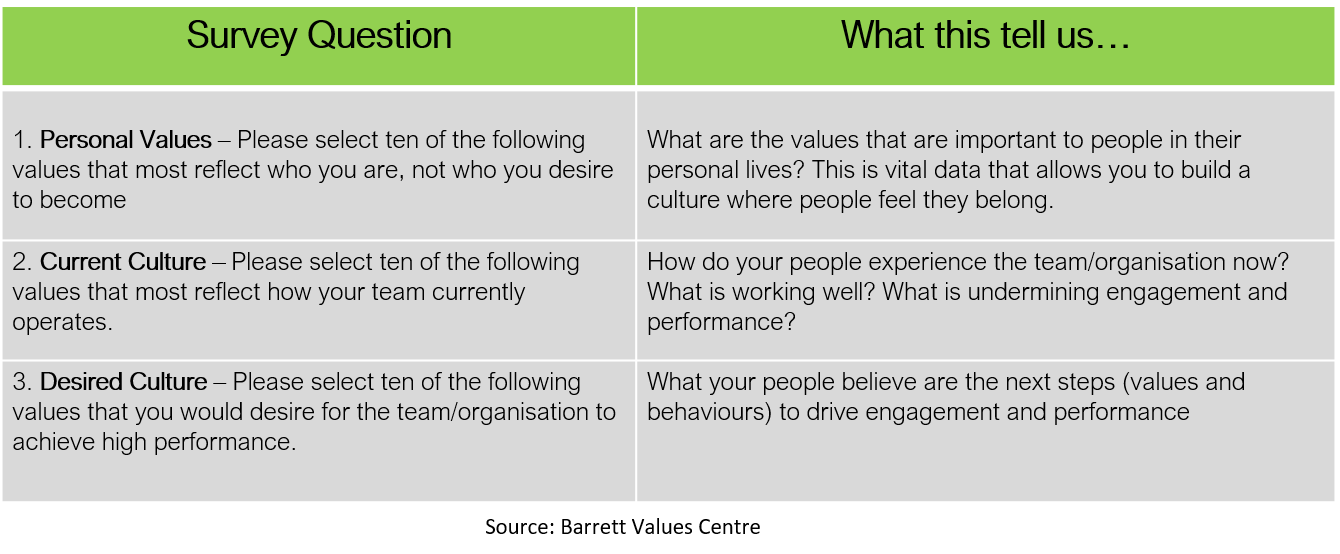
The assessment provides the basis for a different conversation – one where real connection happens and healthy change becomes possible. This provides the context for the broader team exploration which includes the following themes:
- ‘Why do we exist?’ or ‘What is our purpose?’
- How is our team culture contributing to the customer experience and the culture of the wider organisation?
- Given what I now know about myself and others, what does that mean in the context of how we operate as a team and the culture we want to create?
- What matters to us collectively as a group and how can we create a culture where we feel greater alignment?
- What is it about the way we operate that is hindering or helping the personal wellbeing of each of us?
- How are we fulfilling our role to deliver on the business strategy?
- Given what we now know, what are our goals and priorities?
The process enables the group to make choices about ‘the way we want to work together’ and ‘the way we want to be together’ and to take committed action to make that happen. This exercise often reveals ‘blockages’ that are preventing the team/organisation from being their best and identifies the key leverage points to harness the energy and build a healthy culture and thriving team.
The way the learning journey is facilitated and the skills that are practised during the team learning journey build connection, which in turn moves the organisation towards being more human. Where meaningful conversation and deep listening occurs, change happens.
“There is no power for change greater than a community discussing what it cares about” (Margaret Wheatley – Turning to One Another)
In Part 3 I explore Connect to Our Reality and Connect to our Learning.
In this series of blogs posts of I have been exploring the different aspects of ‘connection’ that exist at the heart of a human organisation. In Part 1 I looked at the individual perspective, ‘Connect to Me’ and in Part 2 at the team- or organisation-level perspective, ‘Connect to Us’.
These derive from the model presented here, which is adapted from the Barrett Values Centre ‘Get Connected’ model and which I use in my work as a road map to simplify some of the complexity and multi-faceted considerations that exist when navigating cultural change.

In this post we will explore the third cornerstone, ‘Connect to Our Reality’ and the one that brings it all together, ‘Connect to our Learning’
Connect to Our Reality
In this cornerstone of the ‘Get connected’ model, our focus is on understanding the team, the organisation and the wider environment as a whole and dynamic ‘system’ in the context of:
- Business vision and purpose
- Business strategy
- Business performance
- The customer experiences
- Internal environment (organisation culture and employee experience) and
- External environment (competitors, political, economic, social, legislative etc).
Thinking systemically and holistically and understanding dependencies and the broader context of the overall system is vital to creating a healthy, high-performing team culture.
Building connections means understanding, paradoxically, that everything is already connected. Recognising the interconnectedness of different systems – for instance a team in the context of a business unit, a business unit in the context of an organisation, an organisation in the context of a parent organisation and the external landscape – makes sure that the context for transforming the team culture is aligned.
I once worked with some individual faculties which each formed part of a large educational institution. The team within each faculty had its own subculture, as did every other team. And then there was an overall culture that existed across the organisation. This is quite normal, of course. You’ll see a form of it in every large organisation. The challenge when working with just one faculty is that while you can work on changing the ‘local’ culture, you can’t change the culture at an organisational level. But you can’t ignore that broader context either.
By understanding and accepting the ‘connection to our reality’ we are better able to identify the boundaries in which we operate, which strengthens the team focus and resolve towards their desired culture as an expression of that group of people.
Connect to Our Learning
“If you want a harvest in a year, grow a crop…
If you want a harvest in ten years, grow a tree…
If you want a harvest that will last for a life time, grow people.” -Chinese Proverb
‘Connect to Our Learning’ sits front and centre in our Get Connected model for building team culture and that is rightly where it belongs. Culture transformation doesn’t happen without engaging every single employee on a learning journey to develop self-awareness and the practical skills and behaviours they need to increase their self-mastery, to learn to manage their behavioural triggers, to see different perspectives and to enact self-leadership.
In a healthy team culture, ‘everyone is a leader’. Leadership is a mindset and a behaviour that applies to everyone, not just the anointed few. People are responsible for playing a role in driving their own learning and development and the organisation is responsible for providing the learning opportunities that create engaged employees and healthy, high performing culture.
Our Get Connected approach to building team culture is a learning process designed to ignite new awareness about ‘who we are’ and ‘how we show up’ and to bring to the surface the visible and invisible factors driving engagement and performance. This process is deeply transformational as we delve into what is occurring below the surface and uncover the assumptions that are held about the impact of the different dynamics across the eco-system and on individual and organisational performance and well-being.


